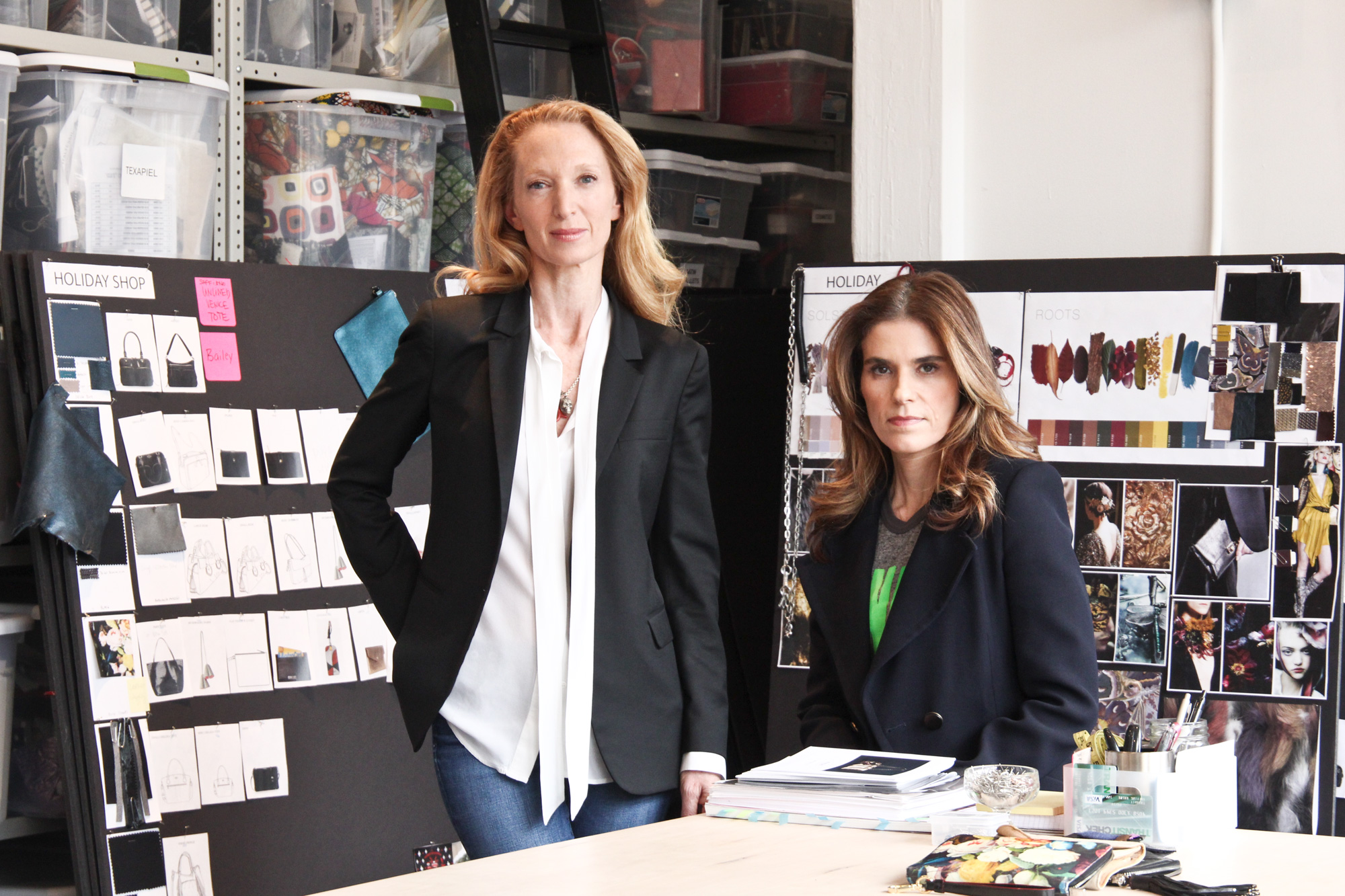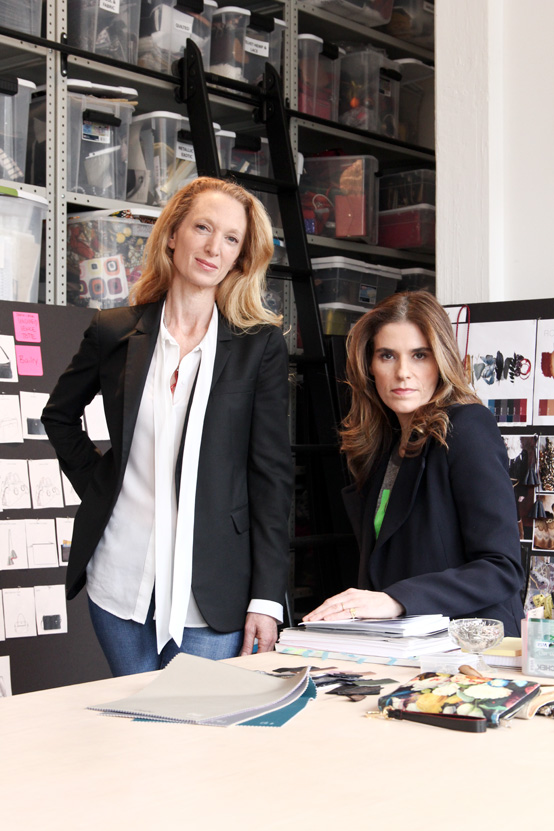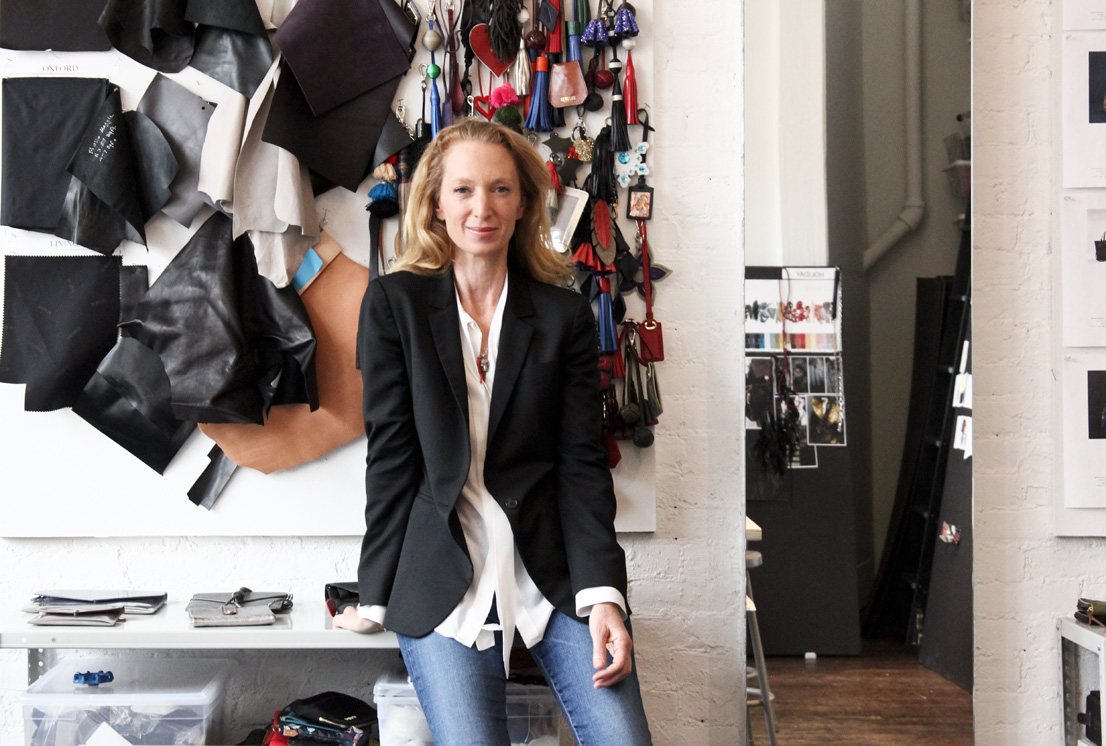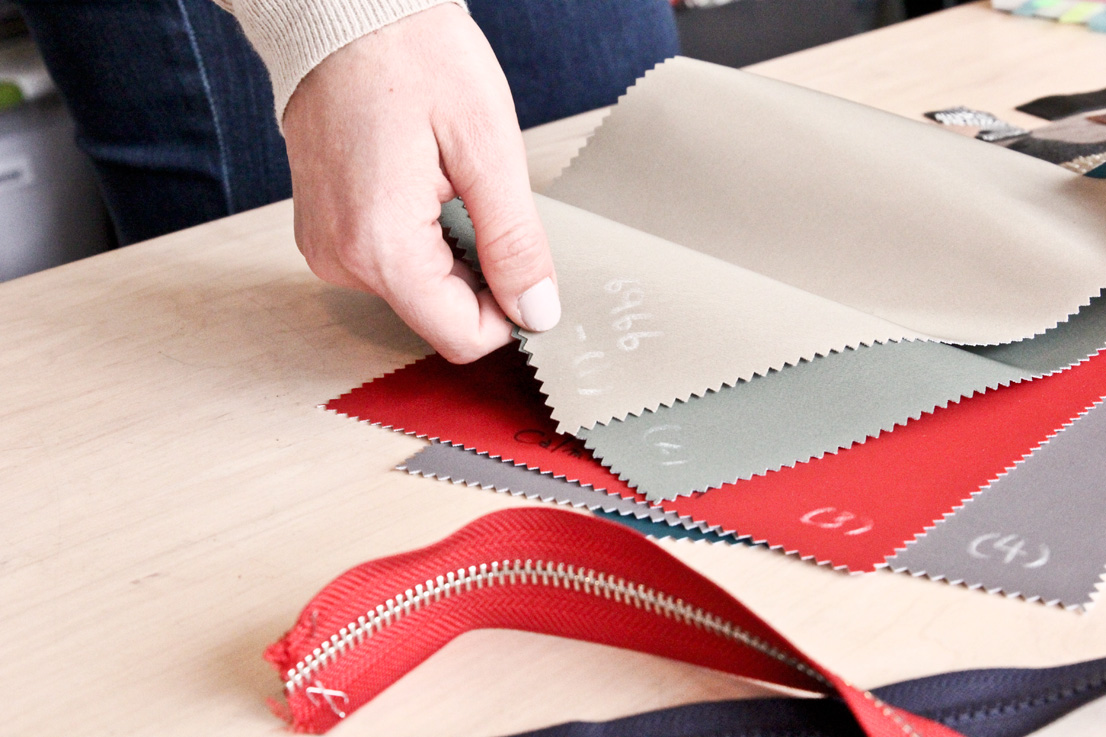Having met in 1985 when then-stylist Monica Zwirner visited the Manolo Blahnik store where Lucy Wallace Eustice worked, the two women bonded over cigarettes and shoes in the building’s basement. With shared experience in fashion as a jumping-off point, they soon became friends. Fast forward to 1999 and a serendipitous reunion at Union Square Farmers’ Market, and it soon became obvious that Monica and Lucy were in similar life stages: mothers and career women forever on the go, and severely lacking in accessories that catered to their lifestyles. With that, MZ Wallace was born.
For the uninitiated, MZ Wallace champions a laid-back aesthetic combining style and functionality. Monica and Lucy wanted to design bags that would allow for every aspect of their busy lives. A bag that they could use all day, every day, all year round, and that they could wear with pride. So, an idea born out of identifying what they lacked in their own accessories collections has enabled them to persevere with a vision they truly believe in, and one they have remained true to over the 15 years since its inception.
Their bags take into account every eventuality, and whether it is a simple pocket to store your Metro card, or a tote that you can roll up and store, MZ Wallace is all about combining the practical with the pretty. Inspiration is taken from all walks of life, most significantly Monica and Lucy’s own lives, and so they gravitate towards a relatively pared-back and subsequently timeless aesthetic.
2016 is set to be a packed year for the brand, with plans to cover even more corners of everyday life with bags ideal for travel and fitness. Added to that is a men’s collection, so the boys can finally get in on the action. Most exciting of all is the upcoming release on Net-A-Porter, which will have loyal clients and newcomers rejoicing. Given their obvious drive and razor-sharp focus, we’re turning to them to gain insight into the high and lows of business relationships, maintaining a work-life balance and most importantly, the MZ Wallace aesthetic.
[show_shopthepost_widget id=”1556764″]
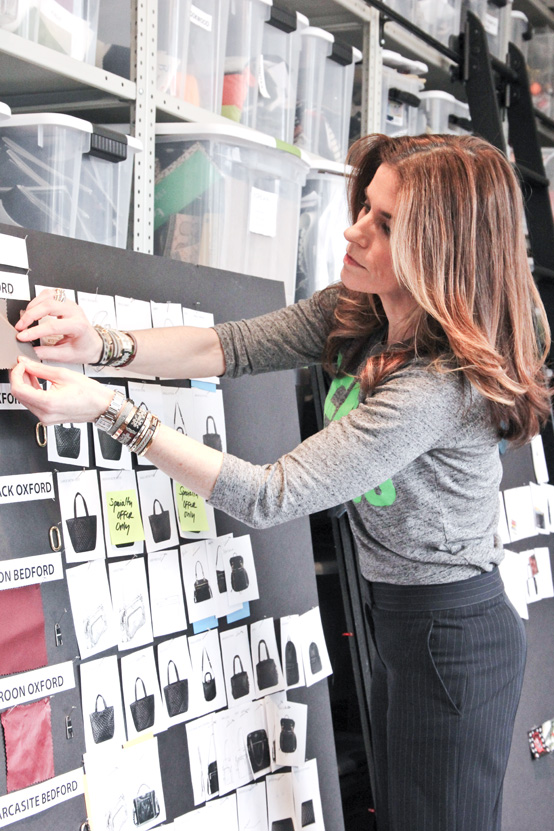 Monica on getting her start as a fashion stylist: I became a stylist after bumping into a friend who was working as a freelance fashion stylist. She needed an assistant so I happily accepted and began my career in fashion. Here in New York, I worked on accounts such as Gucci, Clinique and Lancôme. I also spent a few years in Europe styling for several high-end corporate clients before returning to New York to continue my career as a stylist, where I worked on magazine editorials as well as advertising campaigns. In 1996 I moved into the realm of interior design, as Head of Interiors for New York architect Annabelle Selldorf of Selldorf Architects. It was during this experience that I learned how to combine both “luxurious and utilitarian” materials – a technique that has become integral to our design philosophy.
Monica on getting her start as a fashion stylist: I became a stylist after bumping into a friend who was working as a freelance fashion stylist. She needed an assistant so I happily accepted and began my career in fashion. Here in New York, I worked on accounts such as Gucci, Clinique and Lancôme. I also spent a few years in Europe styling for several high-end corporate clients before returning to New York to continue my career as a stylist, where I worked on magazine editorials as well as advertising campaigns. In 1996 I moved into the realm of interior design, as Head of Interiors for New York architect Annabelle Selldorf of Selldorf Architects. It was during this experience that I learned how to combine both “luxurious and utilitarian” materials – a technique that has become integral to our design philosophy.
Lucy on life before MZ Wallace: My role at Manolo Blahnik began as a salesperson, and really involved doing whatever needed doing, whether it was sales, keeping the stock in order, keeping the shop neat and clean. At some point in my tenure, I began to work with the press and stylists more and more, which is how I met Monica. When she’d stop by the store, we’d end up going down to the basement to smoke cigarettes while she chose the shoes she needed for whatever shoot she was currently working on. We soon became friends. Pre-Manolo professional life involved working at Agnes b., where I began working when I was 15 and still in high school. I worked there Wednesdays after school, and on Saturdays and Sundays. I loved the clothes and wanted to work there so I could get a discount.
The premise behind the label: Our initial mission remains the same 15 years later: to design distinctive accessories for women who lead dynamic lives. At that time, it was impossible to find a bag that was not only both stylish and functional, but at a reasonable price as well. We felt we had something to say and that there was clearly a hole in the marketplace. So our answer was to design great handbags using lightweight nylon and luxurious leathers. We started MZ Wallace during a time when the fashion world was cluttered with logos. I’ve always had a more pared-down aesthetic, so this trend never appealed to me. Again and again we hear stories from our customers about how they are often stopped on the street by other women who notice their bags and want to find out where to get one. I think women notice the bags not because of giant logos, but because of their distinctive design.
The charm of Nylon: We wanted to use nylon because of the functionality – it’s lightweight, durable, water and stain-resistant – yet it can still be beautifully draped and pleated. Playing with the idea of mixing high and low materials was interesting to us. At first, factory owners told us we were crazy for using such expensive leather details and hardware on nylon bags. US department stores told us we didn’t look like any of the other bags on the floor (which we thought was a good thing). We listened to the feedback, but also didn’t listen. We continued to follow our instincts and kept doing what we were doing and it paid off.
On being their customer: I’ve always said Lucy and I are our customers. We are moms that are always on-the-go and so we need an bag that fits our lifestyle. Whether I am in New York or traveling, I find that having a stylish accessory is something that I love. I need a bag that works with me from day to night, from the moment I go to the office in the morning, to the evening when I might be attending a gallery opening or grabbing groceries at the market for dinner.
The design process: Each season, as we begin to design a new collection, we meet with our team to find out what our customers have been asking for and we try to address those requests. Now more than ever, I believe people want to buy brands that are truly authentic. After we address the functionality of the line, we look at aesthetics. Usually we start with a print that we are inspired by – whether it’s from a recent exhibit we’ve seen, or a New York landmark such as the incredible landscaping at The Highline. We then carry out that color scheme in the collection comprised of both new and “essential” styles. From there, samples get made and a final edit happens before we put an order in to ship to our stores and wholesale accounts. Each season is very much an evolution because many of our classic styles that we launched years ago are still on the line today. We have been receiving daily sales recaps from our retail staff since we opened our first store on Crosby St. – not many brands have that kind of visibility with their customers. If a woman wishes a certain style had a top handle, or that her favorite bag would come in a certain color, we will carefully consider adding it to the collection. Yet, we still want to revolutionize how functional handbags can be. I think we’ve done that recently with our 3-strap philosophy that allows you to wear one bag on your arm, as a cross body, and over your shoulder.
Monica on functionality first: Someone recently said to me, “In other parts of the country, people have cars, and that is where they carry their daily life, but in New York you don’t drive as much so your handbag is your home away from home.” Being native New Yorkers, we couldn’t agree more, and so we often design with a city dweller in mind that’s always on-the-go. You see this specifically in our pocketing – one is designed specifically to store your Metro Card, and others are external for quick, easy access to your phone or wallet.
On managing creative blocks: Monica has a strong connection to the art world so contemporary art is very much a part of her life, which you clearly see in her design aesthetic. Inspiration can hit anywhere at any time. Often times I get some of my best ideas during my morning commute on the bike. I think about our designs, what might be missing from the line, what needs of our customers are we not addressing. How her needs might have changed. If we’re blocked Monica and I usually head out to the museums, take walks, look in the stores. It can be anything that inspires you – a show, a song, an article, anything.
Lucy on highs and lows of working with a partner: The advantages of a partnership far outweigh the challenges. You have a partner in the truest sense of the word. Someone to collaborate with, bounce ideas off of, and share the load, both the good and the bad. Sharing the bad is a real test of a good partnership in my mind, because make no mistake the bad will happen no matter what. The good can also be a stressor. I’ve seen partnerships blow apart once the first blush of success happens – suddenly you’re not on the same page about direction. I think one of the reasons Monica and I have such a successful partnership is that from day one we have had the same goals for the business, and our philosophy has remained unchanged. As far as design is concerned, we work together. With that being said, however, Monica tends to be more detail-oriented while I tends to be more of the “editor.” All strategy and business decisions are made together.
Lucy’s tips on what to consider before taking that leap for a passion project: My motto is, “regret is far worse than failure.” Better to have tried and failed than not tried. There is never the right time, there is always a jump off. The right time is when you’re ready to walk away from a certain sense of security (real or imagined), and put everything on the line for your ideas. The right time might be when the pros for doing it outweigh the cons. It’s very important to spend time thinking through possible outcomes – good outcomes, and bad. See what the worst outcome feels like, how you would cope, overcome, and react. You have to really believe in yourself. The sane people quit and give up when it gets hard; only the crazies keep going.
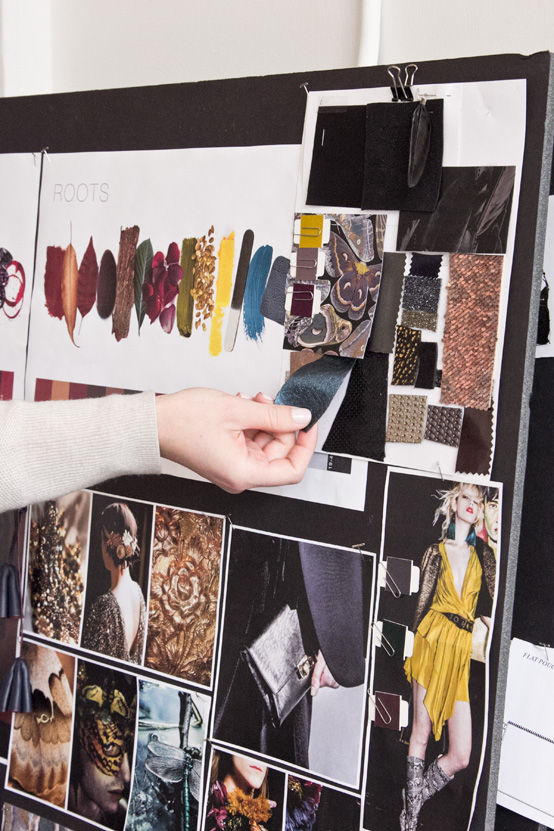 The biggest challenges in scaling a brand: Staying true to your vision, staying on brand and on message. As the business grows, and more of your time is taken up with running the business, it’s easy to get distracted and pulled in many different directions. You have to be disciplined; stay focused. I think many companies struggle with running their own business, as they get bigger. Internal management is really important. Systems have to be put in place as you grow otherwise things become unwieldy and unmanageable. In terms of scaling up, cash flow is a big concern. Often people sell their company not to cash out, but to keep it alive and fund the growth that is needed. Establish a relationship with the banks. Try not to fall into the situation where you are selling bits and pieces to raise money. If you can regularly reinvest a lot or even a little at year-end that always helps with the banks. Know your supply chain. We work directly with our factories, and always have. If something goes wrong, we know the players and can get on the phone, or get on a plane and head over. Relationships are important.
The biggest challenges in scaling a brand: Staying true to your vision, staying on brand and on message. As the business grows, and more of your time is taken up with running the business, it’s easy to get distracted and pulled in many different directions. You have to be disciplined; stay focused. I think many companies struggle with running their own business, as they get bigger. Internal management is really important. Systems have to be put in place as you grow otherwise things become unwieldy and unmanageable. In terms of scaling up, cash flow is a big concern. Often people sell their company not to cash out, but to keep it alive and fund the growth that is needed. Establish a relationship with the banks. Try not to fall into the situation where you are selling bits and pieces to raise money. If you can regularly reinvest a lot or even a little at year-end that always helps with the banks. Know your supply chain. We work directly with our factories, and always have. If something goes wrong, we know the players and can get on the phone, or get on a plane and head over. Relationships are important.
Monica on the need to stay focused: We’re not following any trends because we’re customer-focused, I think it’s not difficult to shut out the noise. I think the noise is disruptive when you’re insecure about your choices. For us, our design philosophy is a strong-guide and that keeps us from being distracted from trends or what other designers are doing.
The importance on nurturing your team: I think it’s important to listen to your employees and create an atmosphere where people feel they can speak up. Collaboration is important. It is very important to give credit where credit is due. I think it is also great whenever possible to promote from within. If you are at a company where there is room for growth, that is a wonderful thing. Mentoring is important. I really believe that an employee should have upped their value by spending time at our company – they should know more and be able to do more than when they first walked in. It’s nice to have a few things that are not industry norms that allow the staff to feel there is something special at the company they work for. We have a fully stocked kitchen and buy lunch for our employees. We also have a catered lunch every Friday. We have team-themed happy hour competitions, bowling nights, etc.
Lucy on the fallacy of achieving the perfect balance: Let’s get real. There is never balance. It’s just unbalanced in different directions at different times. You cannot do everything. I have a very understanding and supportive husband, and I also have someone really great helping with my children. That said I am still pretty stressed all the time. You just do your best, as that’s all you can do. I do know that my husband and kids are incredibly proud of the company Monica and I have built. My children are very glad that I work, and tell me so often. I will also say that from the very beginning of our partnership, Monica and I were very clear with each other about carving out time for our families, which I’m sure has slowed our growth in some way or another. I think any working woman with children feels pulled in two directions. Even if you are staffed up, you can’t be in two places at once.

